A Tribal dancer draws on originality and flair for her dance and costume. She is mindful of not appropriating directly from, imitating or offending another’s cultural values.
Our "Tribal style" came into being with Bal Anat and Jamila Salimpour in the 1970's, drawing on ethnic costumes and movements Jamila fused new and old to create a new dance form.
FCBD and GC refined and embellished this costume idea in the 1990's , with GC really taking my heart with their beautiful colourful aesthetic. Rachel Brice further changed our idea of tribal style with her pared down glamour and elegance from the mid 2000's. So much beauty on that timeline!
I like to take inspiration from textiles, this collective dance history and ethnic adornment to recreate my own unique style.
Here at the Temple Studio, our Tribal costume starts with PANTALOONS. For a dancer these wide and comfy pants allow ease of movement, contrast and pattern to an outfit.
The true name for these pants, which are “extremely full, puffed Turkish-style pants, very full at the waist and gathered at the ankle”*, is “Salvar” or “Shalwar”. These are simply the Turkish and Persian words for “pants”. Pantaloons originated in Persia around 2000 years ago.
Below is a delightful article on pantaloons with a focus on Western fashion history.
https://www.theartyologist.com/harem-pants-interesting-scandalous-history/
The origin of the word pantaloon has its roots in a 15C Venetian character called ”Pantalone”. It was later anglicized to pantaloon, and was a part of a man’s wardrobe in the early 19C. Victorian women later took up the concept of pantaloons to ride their bicycles!
The next and probably most important element is the SKIRT. This skirt is a full, voluminous, 3 tiered skirt with an amazing array of textures, and trims. The first people to wear this long, flowing skirt were the Rom. Originating in India they are thought to have travelled west across Europe, influencing many dance styles along the way.
"It is thought that Rom society emerged in India and then spread out across Europe and later, America. Early records of Indian history mention the bhairnivasni, a skirt that developed from a tube like piece of clothing called an antariya. The antariya was sewn on one side only and held in place by a girdle. This garment was originally an underskirt but eventually developed a drawstring, changed its name to ghaghri and became an outer garment. The ghaghri was made from five and a half metres of fabric and its flare was celebrated in poetry and art, although as in Rom society, the ghaghri was intended to preserve a woman’s purity and modesty." http://dress-to-be-different.blogspot.com/
The skirts we use today are inspired from flamenco tiered skirt that may have been the result of the Rom migrations across Europe.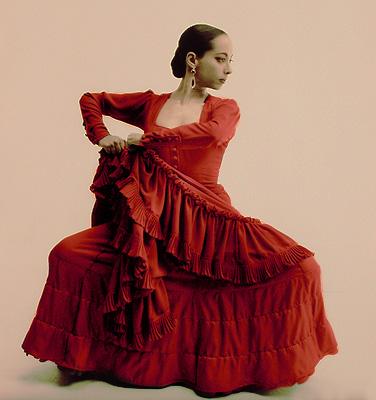
Belen Maya: Flamenco dancer in traditional dress.
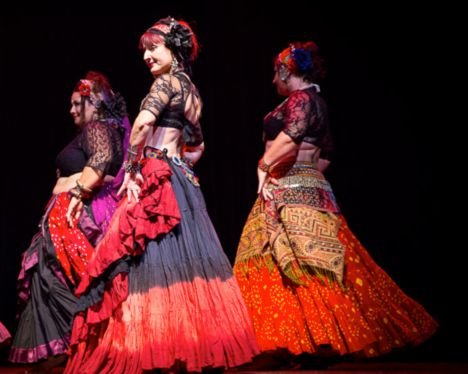
Tribal bellydancers: Richelle, Becky, Kirsty.
The Tribal SKIRT, is used for: the colour and texture, the movement and seductive swirls, the enhancement of the female form, creates grace and beauty as we move together in syncronicity.
To compliment the skirt a HIP SCARF is often worn to define the hips. Originally bellydancers from Algeria, Egypt and beyond used scarves to accentuate movement, adding silver coins and trinkets to catch attention and light.
Over the last 30 years or so, dancers have added fringed, velvet, Russian, folk, Spanish shawls and scarfs to the costume cupboard!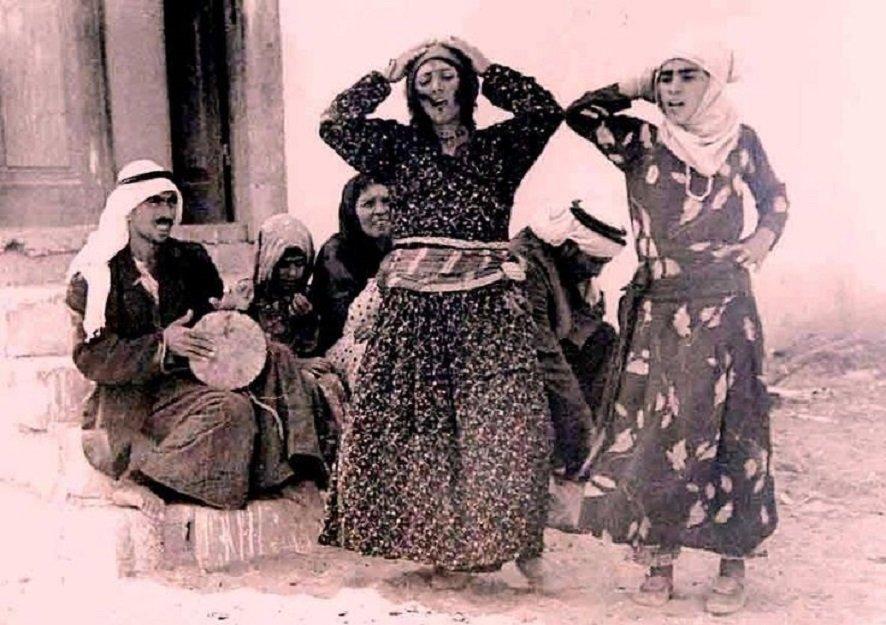
Ouled Nail dancers from Algeria.
From the early 1980's and the beginnings of Tribal Bellydance, the Indian CHOLI was used as part of the tribal costume. The CHOLI is a top that covers the chest and is usually tied at the back, with the back showing. It was a garment that came into being when the Mohguls came to power in the 10th C, bringing Islam and more modest attire. Cholis are mainly worn in the north and west of India, can be plain or beautiful embroidered, mirror encrusted garments. These exquisite cholis were used as part of a Tribal bellydancers costume, often having to be adjusted as they were very small.
As times have changed, the dancer's choli is now made of many fabrics, for comfort and ease of movement, still retaining the cut out back feature. 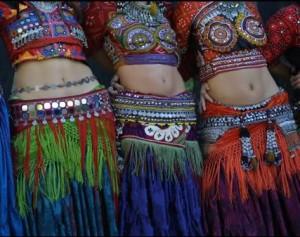
Photo from: Deep Roots Dance
A riot of colour: Indian cholis, hipscarfs and belts!
A black CHOLI, tank or long stetchy top now forms the base for many dancers. Using this base we can add jewellery for decoration and/or a tribal bra to define the torso, the movements and female form.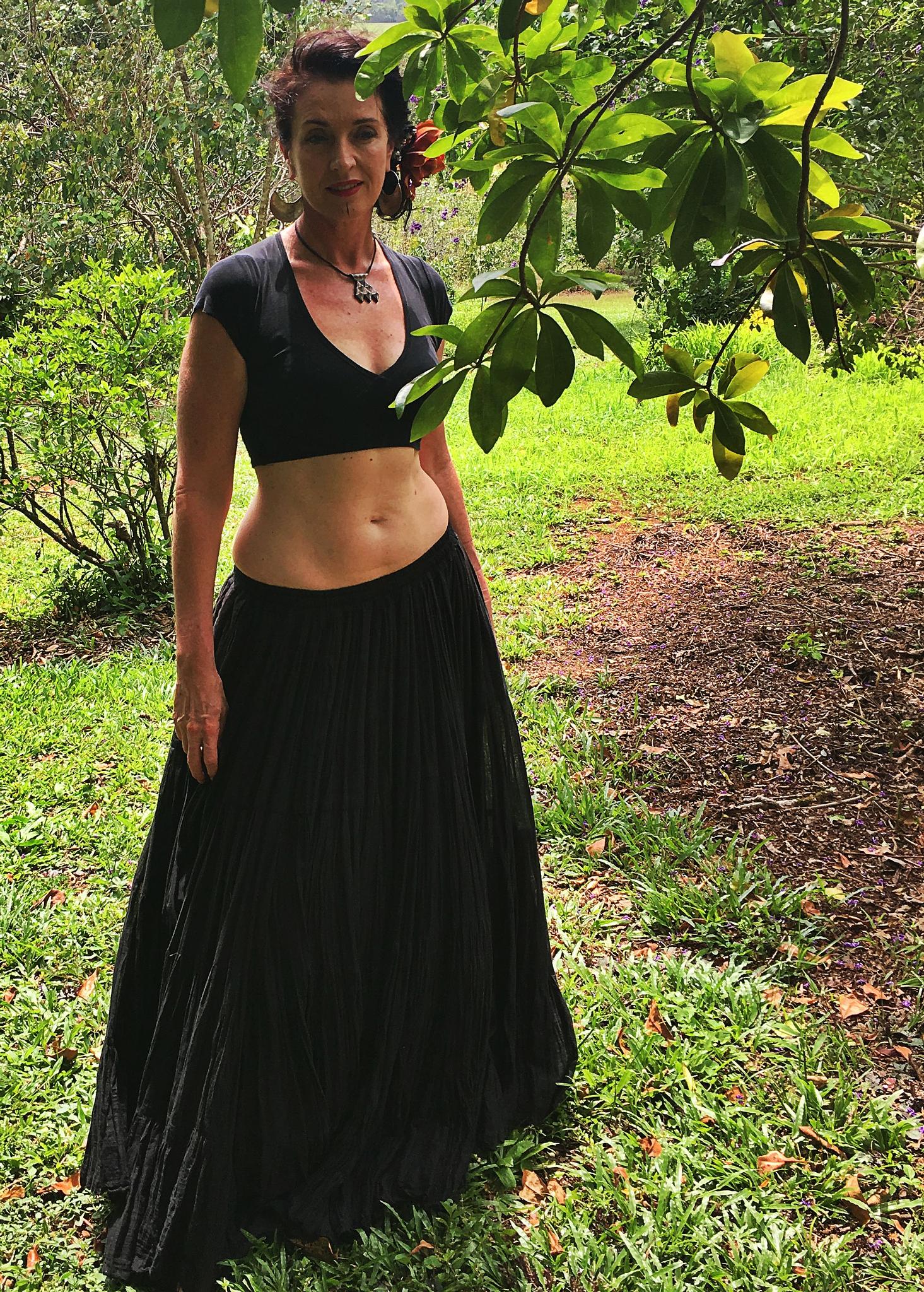
Black basics.
TRIBAL BRA The bra top originated from a long history of modern bellydance. The Tribal dancer reduced the sparkle and spangle factor, the sequins replaced with vintage coins and amulets. From the gilded Tribal bra came many other variations, sari and ethnic textiles, Assuit, embroideries and lace. 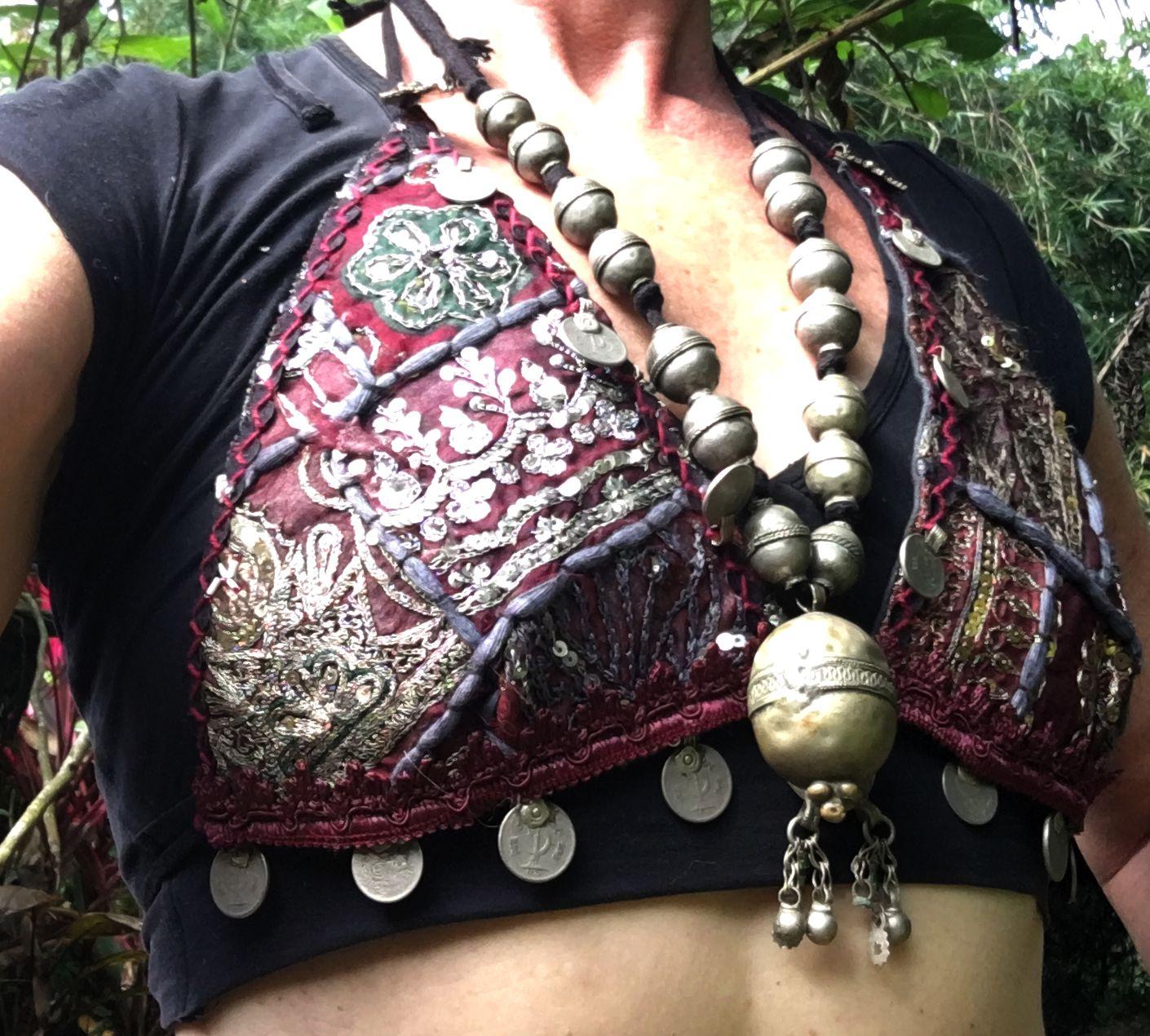
The HEADWRAP has been worn for millenia, as a covering for modesty, protection from the elements, signify caste or race, religion or marital status.
For more information:
https://www.racked.com/2016/12/20/13988300/head-scarves-history-hijab-gele
For the Tribal dancer the head wrap can be part of her costume, usually a long piece of cotton fabric wrapped around the head to frame the face. It can be a full head cover, or just a half wrap. The best fabric is made with cotton, not too heavy.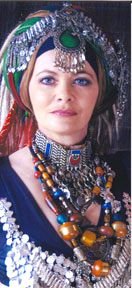
Alaine Casey wearing a tribal turban[from around 2005].
The HEADDRESS, is a lovely piece of jewellery that adorns the headwrap. Many tribal dancers have sourced these headdresses from India, Turkmenistan, Afghanistan, Uzbeckistan where it is customary to wear these pieces as part of traditional wedding ceremonies and rituals.
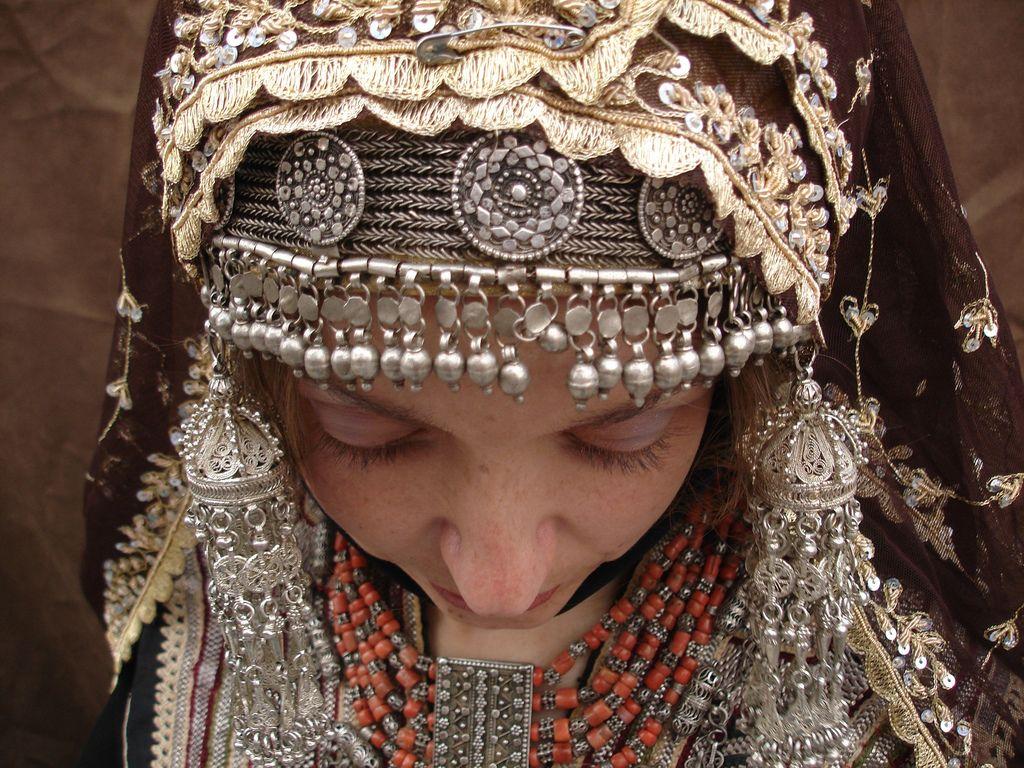
Turkomeni Woman in traditional dress.
As part of a tribal headdress the dancer may use a traditional or a handcrafted one, add flower gardens, insert hairpins, adorn with crowns and clips! The embellishment of a headwrap can be a work of art.
Next in the series on costume: TRIBAL BELTS

